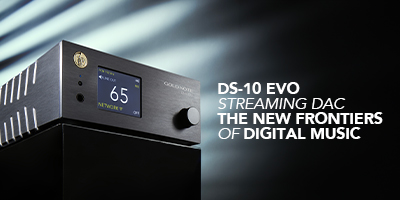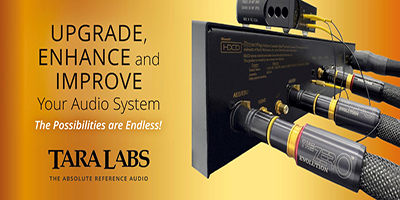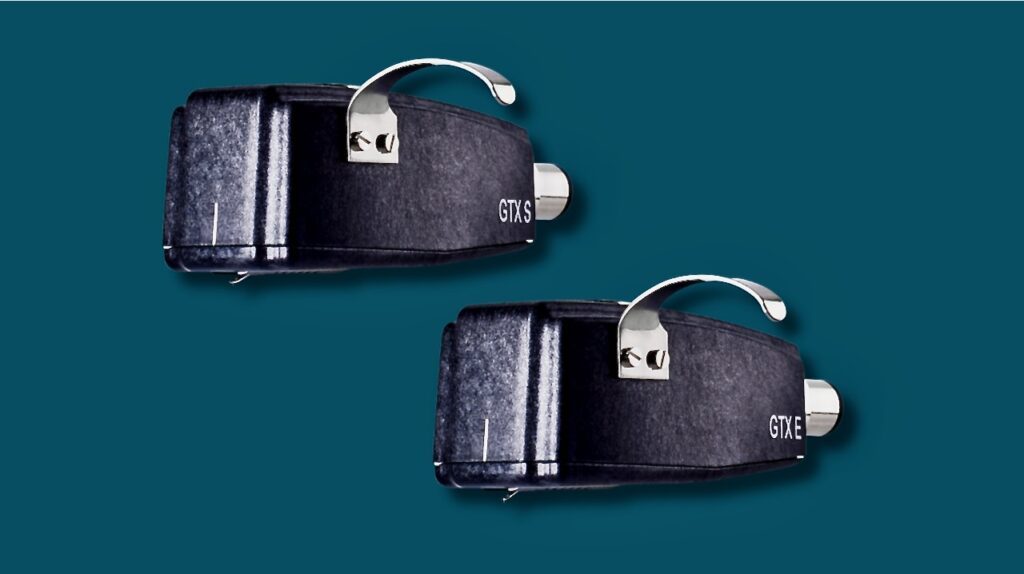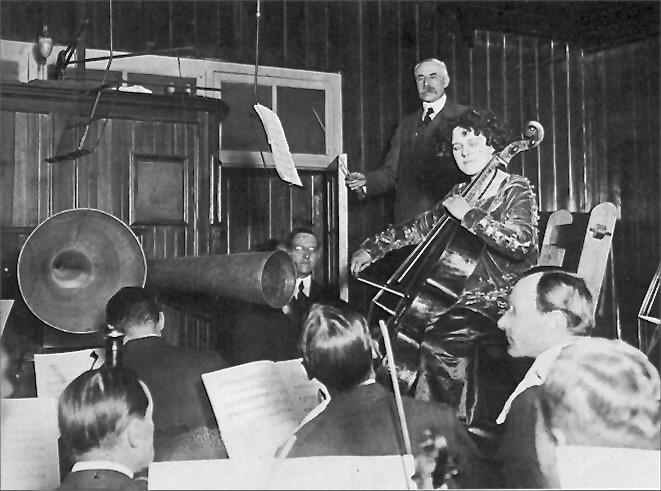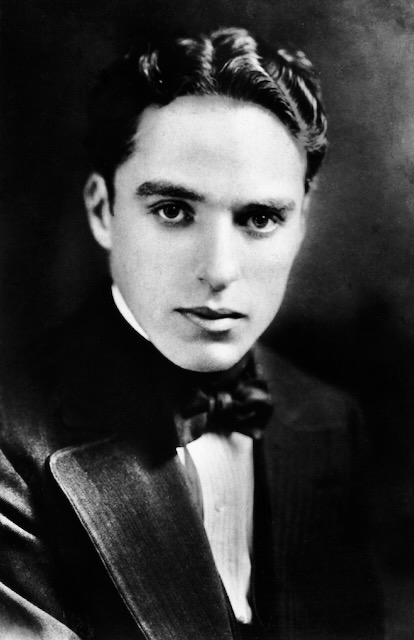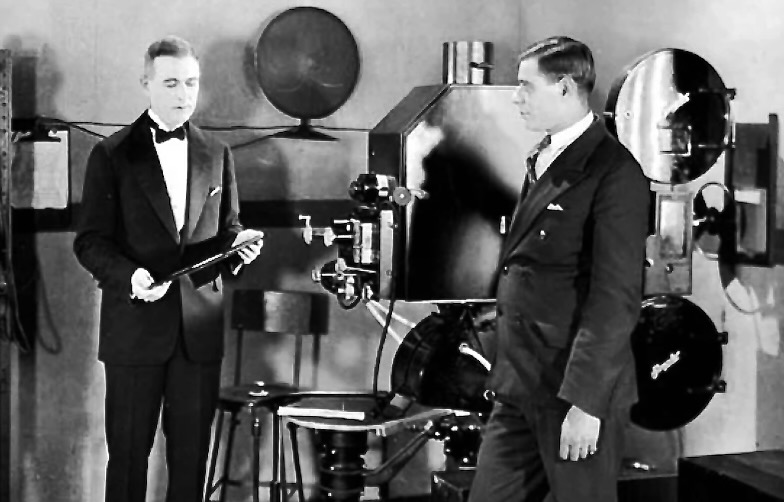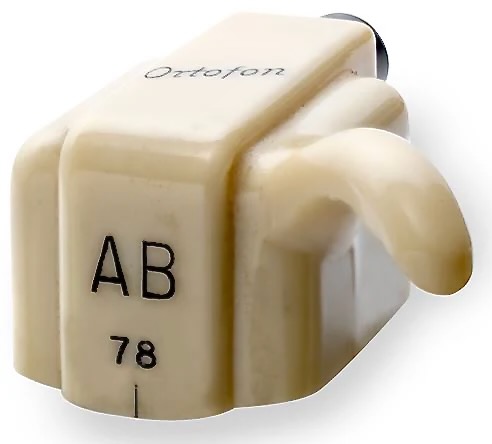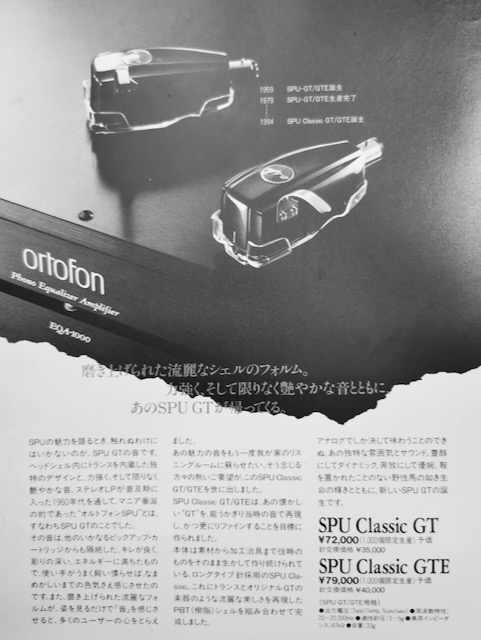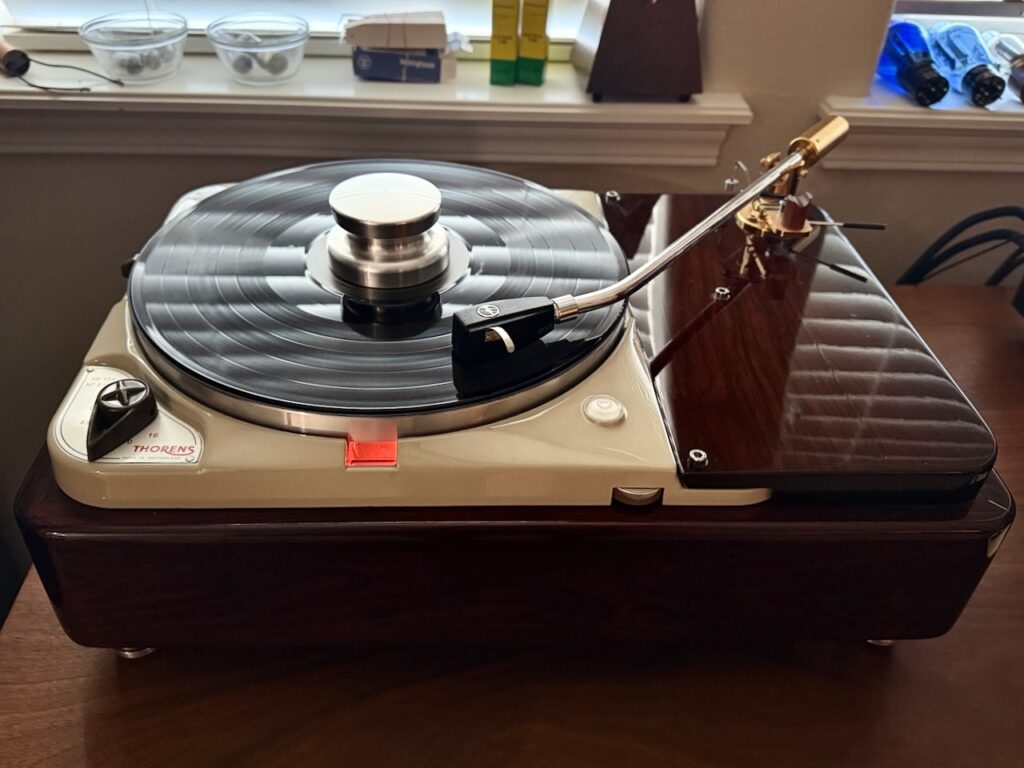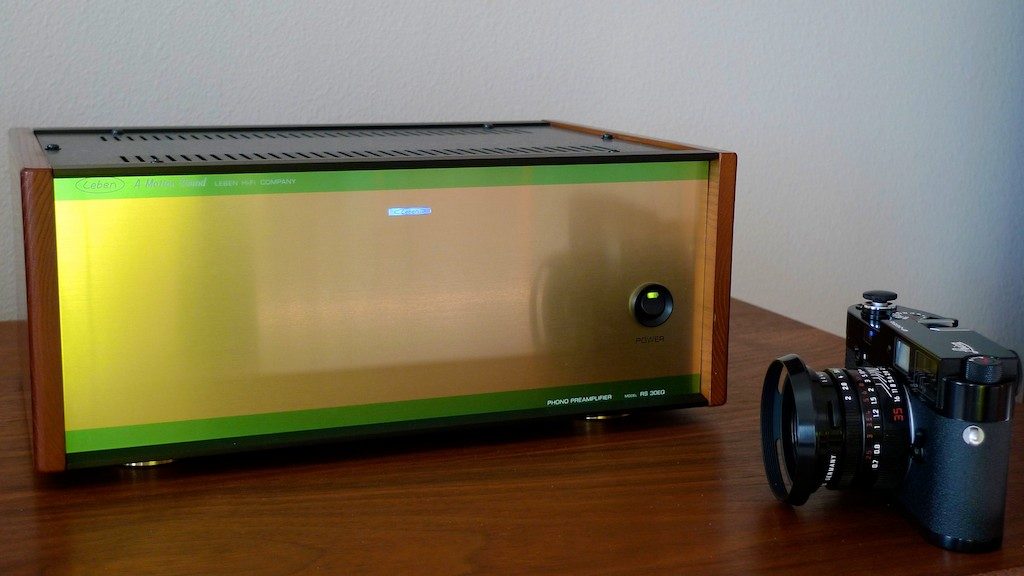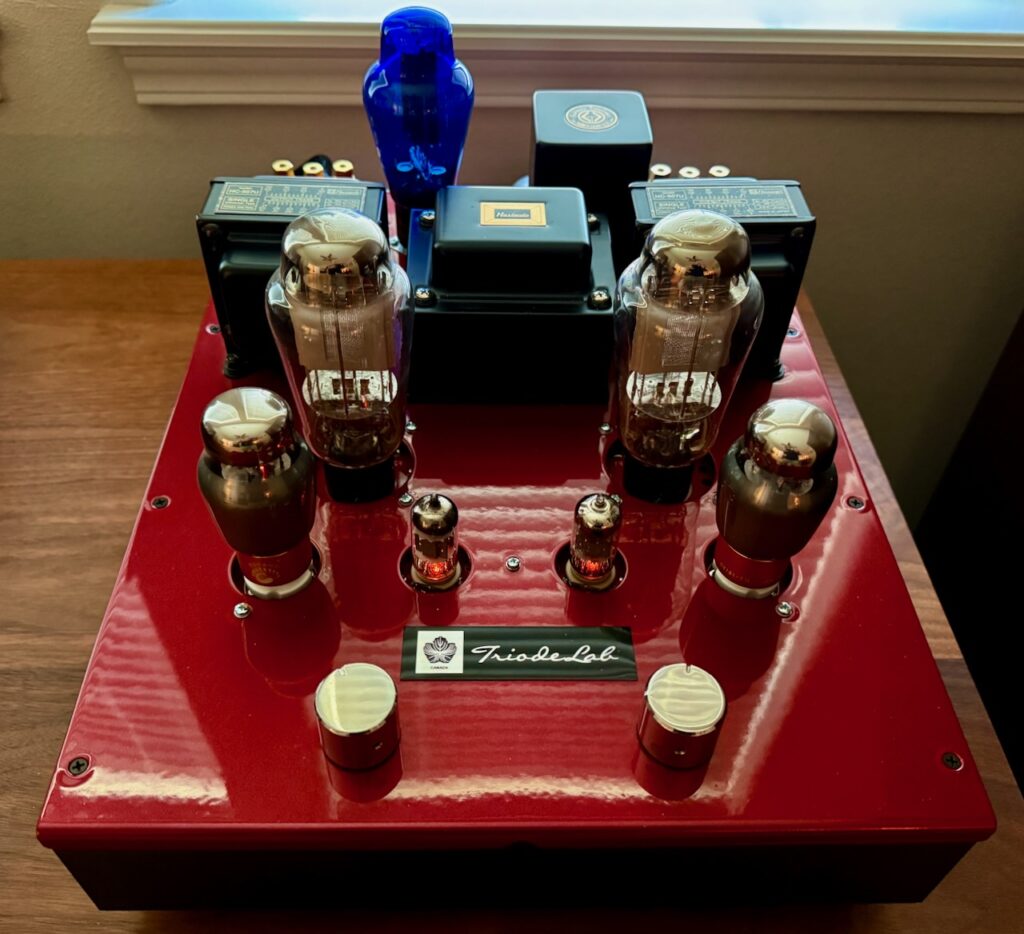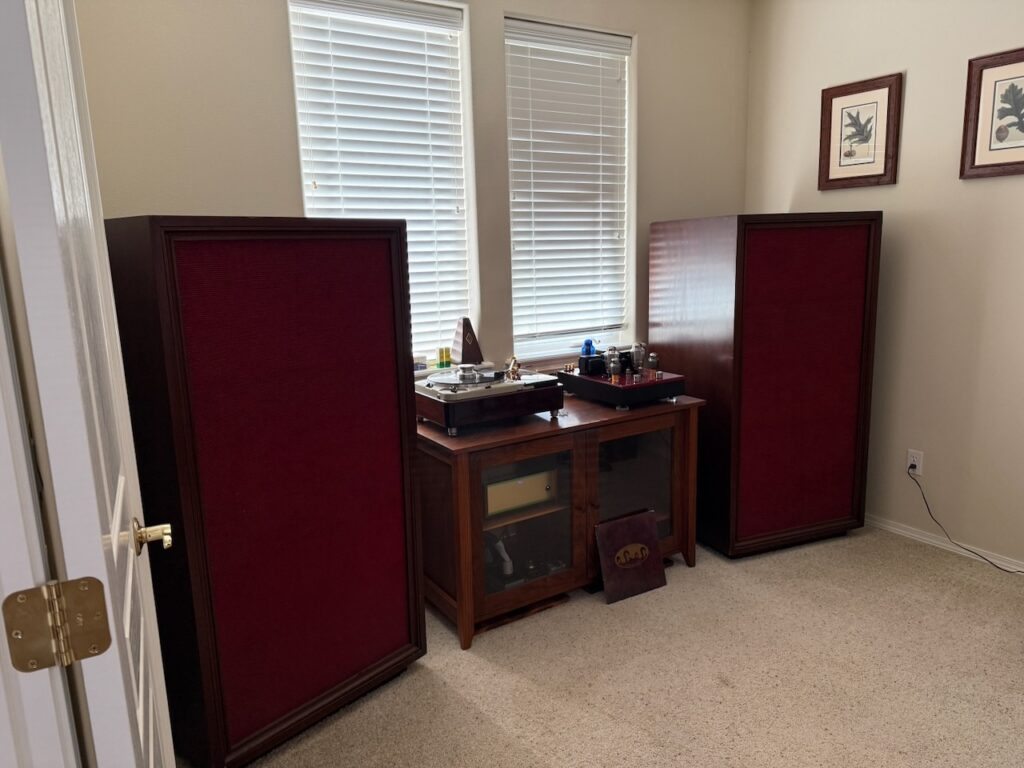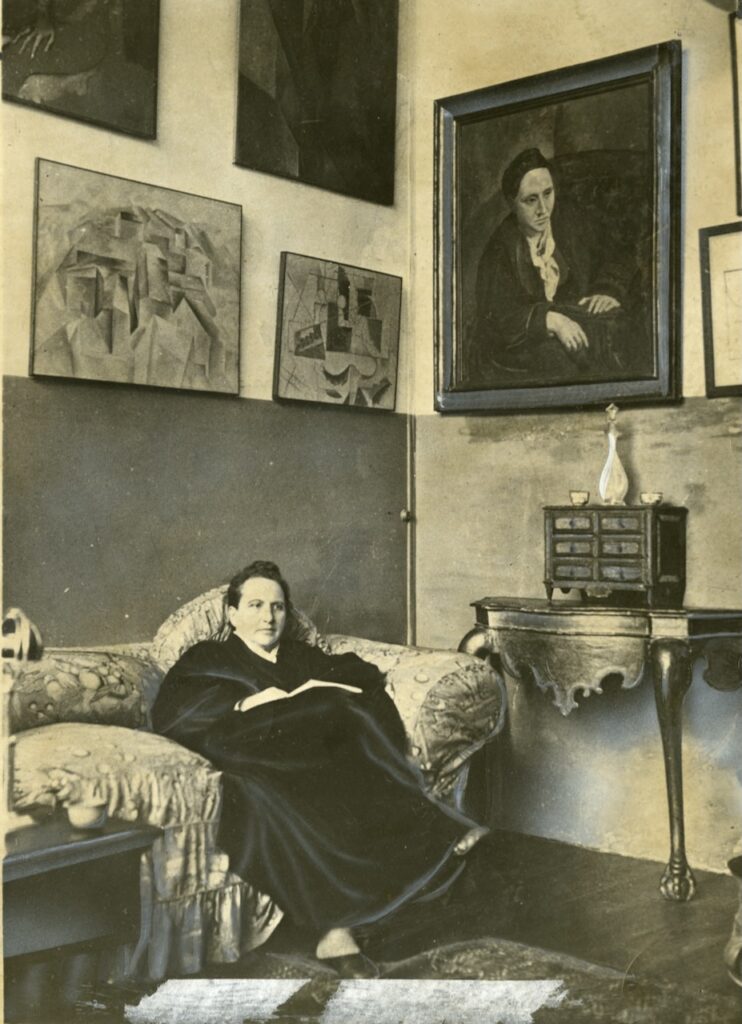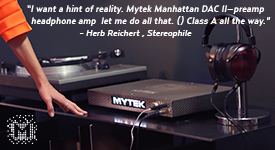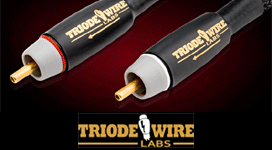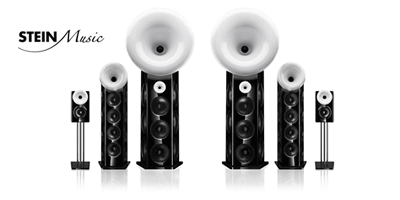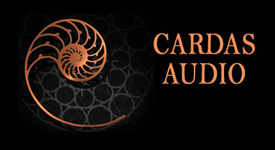As is my custom, I like to provide the readers of Jeff's Place a preview of upcoming feature articles for Positive Feedback, which in this case is the newly released Ortofon SPU GTX S moving-coil phonograph cartridge.
The full feature review article has now been published at Positive Feedback, and you can read it HERE.
Enjoy!
Ortofon’s been in the audio business for 107 years now, and they have been producing the ever-popular SPU product line of moving-coil phonograph cartridges since 1959.
Ever since the Ortofon SPU product line of phonograph cartridges made its debut, music and audio enthusiasts have been enamored with their big, bold, exciting, liquid, naturally warm, and rich presentation of the music.
Photo above: The NEW Ortofon SPU GTX S and E!
When I first saw the press release about the innovative new Ortofon SPU GTX S cartridge back in December, I was thrilled by Ortofon’s description that it included a miniature step-up transformer (SUT) inside the SPU body shell, so no outboard SUT was needed, which resonated with my belief that simplicity in audio aids in achieving extraordinary musical performance.
That internal SUT means that music lovers can run their Ortofon SPU GTX S cartridge directly into a moving-magnet phono preamplifier without the need for an external SUT, as is usually the case with moving-coil phonograph cartridges, opening up easy access to that classic SPU magic to a new generation of listeners.
An Audio Enūma Eliš
English Assyriologist George Smith in 1876 published the Babylonian creation story the Enūma Eliš, that was recovered by English archaeologist Austen Henry Layard in 1849, from the ruins of the Library of Ashurbanipal at Nineveh.
Photo above: Bas-Relief from the temple of Nimrod of Ninurta (right) battling Anzû. Public domain photo courtesy of Wikimedia Commons.
This fascinating ancient Akkadian text from the late 2nd millennium BCE described the creation of the world, a battle between gods focused on offerings to the deity Marduk, the creation of man destined for the service of the Mesopotamian deities, and it ends with a long passage praising Marduk.
A year after the publication of the Enūma Eliš in 1876, the seed of an audio creation story was planted at the start of the acoustic era of recording in 1877, which would develop and grow to fruition over the next century, as we spanned the acoustic era of recording (1877 to 1925), the electrical era of recording (1925 to 1945), the magnetic era of recording (1945 to 1975), and the digital era of recording (1975 to the present).
Documenting creation stories is important to mankind for establishing a framework of history, of belief, and of mankind’s role in the world.
In the same way us audio scribes need to remind ourselves and our fellow enthusiasts of the audio creation stories that have brought us to the present day of high-fidelity audio.
Among those audio creation stories, we should remind ourselves every time the stylus of our moving-coil cartridge touches down in an album’s record groove, of audio’s Enūma Eliš of the Ortofon SPU moving-coil phonograph cartridge, and the monumental impact it would have on the world of high-fidelity audio.
Photo above: HMV publicity photograph, showing the cellist Beatrice Harrison and the composer Edward Elgar recording his Cello Concerto at HMV's studios, using the acoustic recording process. Public domain photo courtesy of Wikipedia.
I want to take you on a journey back in time to the latter part of the 19th century, when new emerging technologies were taking the world by storm, with technologies like the telephone, typewriter, electric battery, steam locomotive, and audio & video recording were emerging and shaping the imagination of a new and modern society.
In the later part of the 19th century, audio got its start in the acoustic era of audio recording (1877 to 1925), and the silent film era had captured the imagination of the public (1890 to 1930).
Photo above: "Charlie Chaplin, widely acclaimed as one of the most iconic actors of the silent era, c. 1919." Public domain photo courtesy of Wikimedia Commons.
As these marvelous new technologies emerged and became popular with the public, during the time when Enrico Caruso was "the voice" of acoustic music recordings on 78rpm records, and Charlie Chaplin was "the face" of the silent film industry, there were visionaries who were thinking about how to take those two technologies - sound & film - and merge them together.
In 1918 two Danish engineers - Axel Petersen and Arnold Poulsen - envisioned a future where those two technological marvels would be combined, or synchronized, and they founded the Electrical Phono Film Company to research this possibility, which would later become the Ortofon we know & love today.
Photo above: Axel Petersen and Arnold Poulsen.
By 1923 Axel Petersen and Arnold Poulsen's vision of combining synchronized sound & film recording was realized, and when the first experimental film with synchronized recorded sound was shown at the Palace Theatre in Copenhagen, the names of Petersen & Poulsen were credited on the film strip for this innovation.
The first commercially successful type of electrical phonograph pickup was introduced in 1925 at the start of the electrical era of recording. As time progressed through the electrical era of recording (1925 to 1945) and into the monaural magnetic era of recording (1945 to 1957), the performance potential of sound recording had evolved beyond the performance of the available phonograph cartridges.
In 1918 Petersen & Poulsen had founded the Electrical Phono Film Company, but as recording technology continued to advance, the name of the company was changed to FonoFilm Industry A/S, and in 1947 Ortofon A/S was founded under the FonoFilm Industry umbrella.
The name "Ortofon" was created from the contraction of two Greek words "orto" and "fon," which meant "correct sound”.
In 1948, in response to the need for higher-fidelity phonograph cartridges that could realize the full potential of monaural magnetic recording, Ortofon's Holger Christian Arentzen introduced the world's first moving-coil phonograph cartridge, the Mono-A.
Photo above: The Ortofon "Mono-A" was the first moving-coil phonograph cartridge.
The Ortofon Mono-A moving-coil phonograph cartridge was a tremendous advancement in sound quality during the monaural magnetic era, and featured a fixed magnet and a moving coil, which generated sound by converting mechanical vibrations from the record groove into electrical signals.
In 1957 sound recording once again advanced substantially during the stereo period of the magnetic recording era (1957 to 1975). The new higher-fidelity stereo recordings meant that a new stereo phonograph cartridge was needed to realize their full potential.
Photo above: The first stereo pick-up (SPU). Photo courtesy of Ortofon.
In response, Ortofon's monaural moving-coil phonograph cartridge technology was updated to stereo, and the first stereo pick-up (SPU) was released in 1959 so that the higher-fidelity performance of these new stereo recordings could be realized by recording industry professionals and home listeners.
Audio technology hasn't stood still, and in response Ortofon continued to incorporate materials advancements into their moving-coil phonograph cartridges. Stronger magnets made from samarium cobalt and neodymium reduced the size of magnetic circuits and increased cartridge output. New thin cantilever rods made from hard materials like sapphire, boron, and ruby were incorporated. The availability of high-purity Japanese copper and silver wires allowed new state-of-art moving-coils. A new wood-powder resin material was used to make SPU housings.
I for one, am grateful to Ortofon for the development of the SPU moving-coil phonograph cartridge, and the monumental impact it has had on the world of high-fidelity audio, that I derive so much pleasure from today.
I encourage you to join me in kindling the memory of one of our most cherished audio creation stories, that of the Ortofon SPU moving-coil phonograph cartridge, every time the stylus of your phonograph cartridge touches down into the record groove of a favorite album.
The New Ortofon SPU GTX S Moving-Coil Phonograph Cartridge
The newly released Ortofon SPU GTX S moving-coil phonograph cartridge combines both classic and modern design elements, to produce a phonograph cartridge I consider to be truly magnificent.
Photo above: The new Ortofon SPU GTX S moving-coil phonograph cartridge with internal SUT.
The GTX incorporates high-performance technology that has stood the test of time, like Alnico magnets, high-purity copper moving-coils, and an aluminum cantilever, just like in my SPU Classic cartridge that I’ve been enjoying for many years now.
Photo above: My Ortofon SPU Classic GM MKII.
I asked Ortofon's Louis Dorio what the inspiration for the new Ortofon SPU GTX S was:
"The major driving force behind the development of the GTX series was request from the market, especially the Japanese market. It's a big part of our heritage - the original GT came out in 1959 and was discontinued in 1979. The next one was available in 1994 and lasted about 10 years. So the GTX is really a third generation product, and we feel that it's the finest example of that.”
Photo above: The original advertisement for the Ortofon SPU Classic GT and GTE.
I asked Louis if he could tell us a little more about the new GTX’s innovations:
"The new glass-fiber reinforced polymer was chosen to reduce the overall mass and to make the walls of the housing a little thinner - this is owing to the size and weight of the transformer that has to live inside. Of course this presents some unique challenges, because the housing material has an influence on the sound. We settled on this material because it gave the right level of involvement in the sound. It has to be just right - not too much, not too little.”
Photo above: Ortofon internal mini-SUT for the GTX.
"The transformer was another interesting challenge on its own - there were a lot of experiments to optimize the performance of the transformer given the limited real estate it has in the shell. We opted for permalloy core material, despite trying the amorphous material (it didn't provide the right sound in this application) that we use in our Lundahl-based ST-70 transformer. There was also the challenge of shielding the transformer, as we had to balance the need for shielding properties with the thickness of the material that could fit here.”
"Also, as far as internal construction of the motor unit and stylus, this is the same as our SPU #1 series. As you can probably tell, there's a certain magic to having a custom-built transformer designed around the SPU motor.”
I like to think of the Ortofon SPU GTX S as a nuevo classic design, a reprinting of the Enūma Eliš, so to speak, whose genetic origins can be traced back to the Ortofon SPU Classic GT and GTE moving-coil cartridges, and even back to those original SPUs.
The Vintage-Inspired Audio System For This Review
In a nod to recognizing the great importance of our audio history, I installed the new Ortofon SPU GTX S moving-coil phonograph cartridge into my vintage-inspired audio system, that also combines both classic and modern design elements to achieve extraordinary performance.
Photo above: Vintage Thorens TD-124 with the new Ortofon SPU GTX S moving-coil cartridge with built-in SUT.
The turntable in my vintage-inspired audio system is my classic Thorens TD124 turntable that was restored by Artisan Fidelity. The TD124 is known for its exceptional sound quality and robust build, and was originally introduced in the late 1950s, around the same time as Ortofon’s debut of the storied SPU moving-coil phonograph cartridge, both of which are beloved by us audiophiles for their vintage charm and high-fidelity performance.
I mounted the Ortofon SPU GTX S - hereinafter referred to more simply as the “GTX” - on the Thomas Schick 12-inch tonearm, which is also a nod to audio’s origins, and is an excellent match to the GTX.
Photo above: Leben RS-30EQ phono equalizer.
The tonearm leads plug directly into my lovely little vacuum tube phono preamplifier, the Leben HiFi Stereo Company RS-30EQ, with no need for a SUT between the two thanks to the GTX’s internal SUT.
That is a simplicity that I appreciate, eliminating the need of an external SUT and an additional pair of interconnects. This simplicity is not only a cost savings to the listener, but also removes a number of sound quality degrading connection interfaces the signal has to pass through - a win-win.
Photo above: the Triode Lab 45 EVO SET integrated amplifier.
From the RS-30EQ a pair of Acoustic Revive RCA Absolute FM Interconnects plugs into the incredible performing little Triode Labs 45 EVO SET integrated amplifier, which is in itself a nod to simplicity and ultra-high-fidelity performance.
The 45 EVO connects to the loudspeakers with another nod to simplicity and history, the Duelund Coherent Audio DCA16GA tinned-copper speaker cables.
Photo above: The custom vintage Altec loudspeakers made for Conductor Leopold Stokowski.
The loudspeakers themselves are actually an important chapter in the history of audio, as they were custom built Altec loudspeakers for famed Conductor Leopold Stokowski, for his domestic use in the early 1960s.
Frederik Carøe of Duelund Coherent Audio fame and I replaced these vintage loudspeakers’ crossovers in the Duelund-Altec Project using the latest state-of-art Duelund Coherent Audio CAST tinned-copper capacitors, inductors, and resistors - in a Jean Hiraga inspired crossover circuit - that brought them to a level of performance that is only dreamed about with many modern loudspeakers.
In terms of musicality, live-like musical realism, emotional impact, and the natural presentation of imaging, soundstage, and sense of recorded acoustic, Conductor Leopold Stokowski’s custom Altec loudspeakers with their updated Duelund CAST tinned-copper crossovers, combined with the other exceptional components in this vintage-inspired audio system, are the perfect ultra-high-fidelity laboratory for listening to the new Ortofon SPU GTX S phonograph cartridge.
Photo above: Gelatin silver print of Gertrude Stein in her Paris studio, with a portrait of her by Pablo Picasso. Public domain photo courtesy of the Library of Congress and Wikimedia Commons.
I like to think of this vintage-inspired audio system as what Gertrude Stein would have listened to in her 27 rue de Fleurus Stein Salon in the avant-garde city of Paris in the 1920s, had this audio system existed then.
This was where the muse met with members of ‘the Lost Generation’ of Pablo Picasso, Ernest Hemingway, F. Scott Fitzgerald, Sinclair Lewis, Ezra Pound, Henri Matisse, et al, which catalyzed the literary, artistic, and cultural explosions that occurred from those encounters in her Stein Salon.
As a final note, this vintage-inspired audio system is set up in my rather small office in a break from audiophile orthodoxy, with the loudspeakers positioned in room-boundary locations (i.e. room corners), which accentuates the emotional engagement of the listening experience with all monaural (particularly) & stereo recordings from Planet Earth’s Recorded Music Canon, spanning the acoustic to digital eras of recording.
Listening To the Ortofon SPU GTX S
My listening priorities have evolved some over the decades, so I thought I’d mention what I’m listening for in the GTX’s performance.
Photo above: Public domain photo of Woody Guthrie in 1943 with his Gibson LG-2, at least I think it's the LG-2.
Musicians express their creativity through live music and recordings, connecting with audiences through their personal experiences and messages. They aim to make an impact in their chosen art form, evoke emotions, and inspire change in society through their music.
So what has risen to the top of my listening priorities is the ability of an audio component to connect me as a listener to the musicians evoking my emotions through their music, from recordings of any era of the recording arts, of any fidelity.
I want to feel the artistry of their music and message in my ears, in my heart, and on my body.
I’ve found some of the keys to this style of listening emphasis is for audio components to let as much recorded information through as possible, to provide high-contrast among recordings of differing eras and fidelity, and with an overall voicing that emphasizes the musicality & emotional attributes of music, which results in sound quality mostly taking care of itself.
As you might imagine, I’ve been listening to a lot of records through the Ortofon SPU GTX S moving-coil phonograph cartridge, and I’ve picked out what I think are a selection of particularly fun, emotionally engaging, and fine records to highlight its performance attributes.
Let’s do a little listening, shall we?
Ok, that's all for now. The full feature article about the new Ortofon SPU GTX S moving-coil phonograph cartridge will be published at Positive Feedback in the next week or so, and as soon as that happens, I'll provide a link to it in this article.
As always, thanks for stopping by, and may the tone be with you!

